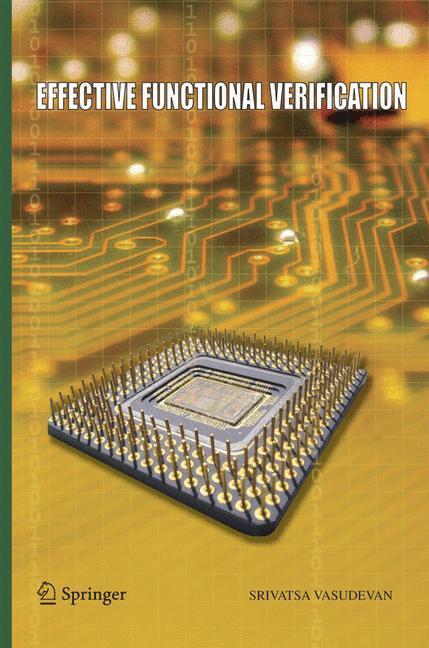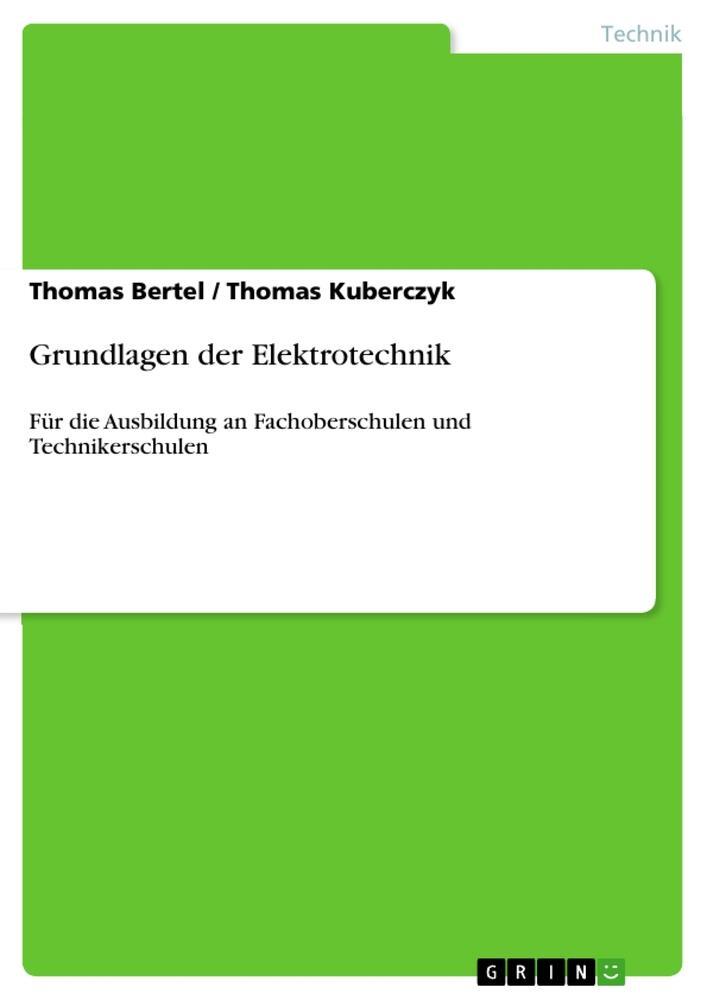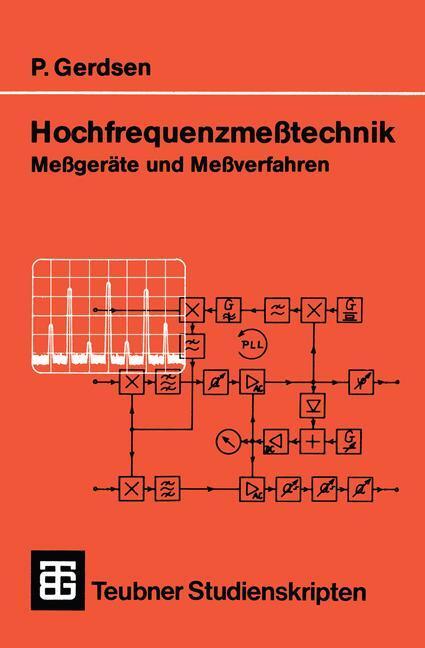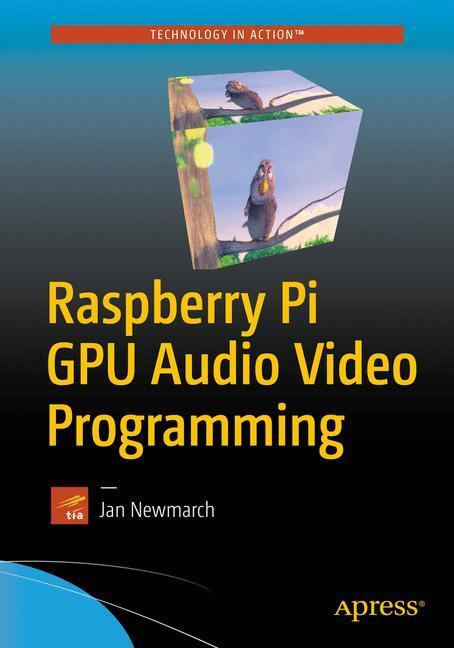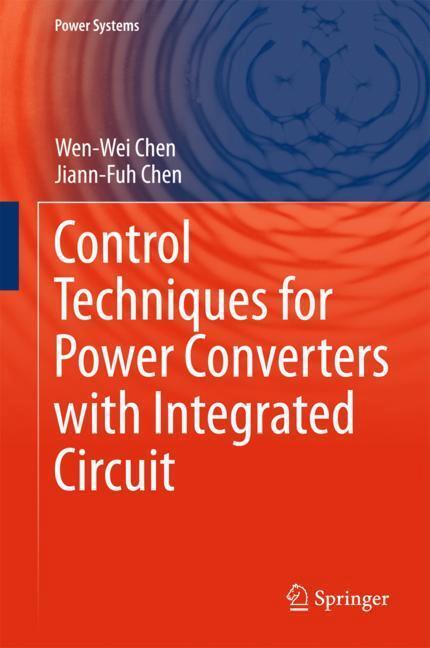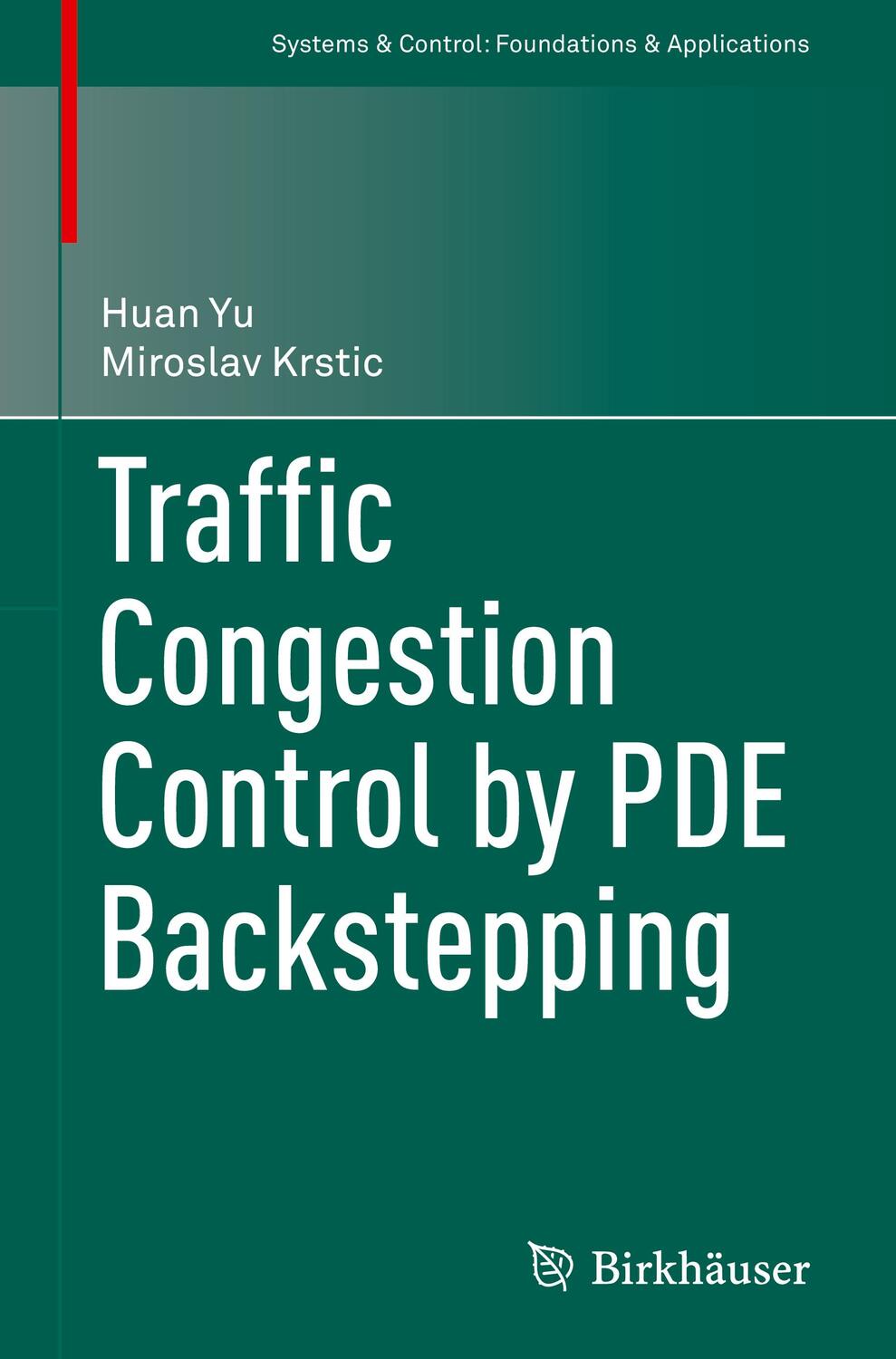91,95 €*
Versandkostenfrei per Post / DHL
Lieferzeit 4-7 Werktage
The second part with 3 chapters is targeted towards people in management and higher up on the experience ladders. New verification engineers reading these chapters learn what is expected and how things work in verification. Some case studies are also presented with analysis of proposed improvements.
The last two parts are the result of experience of several years. It goes into how to optimize a verification plan and an environment and how to get results effectively. Various subjects are discussed here to get the most out of a verification environment. Lastely, the appendix discusses some tool specifics to help remove repetitive work and also some tool specific guidelines.
While reading Effective Functional Verification, one will be able to get a jump start on planning and executing a verification plan using the concepts presented.
The second part with 3 chapters is targeted towards people in management and higher up on the experience ladders. New verification engineers reading these chapters learn what is expected and how things work in verification. Some case studies are also presented with analysis of proposed improvements.
The last two parts are the result of experience of several years. It goes into how to optimize a verification plan and an environment and how to get results effectively. Various subjects are discussed here to get the most out of a verification environment. Lastely, the appendix discusses some tool specifics to help remove repetitive work and also some tool specific guidelines.
While reading Effective Functional Verification, one will be able to get a jump start on planning and executing a verification plan using the concepts presented.
This book on Effective Functional Verification will enable the reader to get a jump start on planning and executing a verification plan using the concepts presented. The book is divided into four parts. The first will appeal to newcomers to this field and more experienced readers. The second part is targeted towards those in management and higher up the experience ladder. The last two parts detail how to optimize a verification plan and an environment, and how to get results effectively. Case studies are also presented with analysis of proposed improvements. Various subjects are discussed on how to get the most out of a verification environment. Finally, the appendix discusses some tool specifics to help remove repetitive work and also some tool specific guidelines.
1. An Introduction to IC Verification. Importance of Verification. Overview of a Typical ASIC Design Process. Factors in Successful Verification. References.
2. Approaches to Verification. What is Functional Verification all About? Stimulating the design - A choice of approaches. Verification Approaches Based on Integration. Instruction Driven Verification. Random Testing. Coverage Driven Verification. Transaction Based Verification. Golden Model Approach. Pre-Post Processing Approach. Assertion Based Verification. Formal Verification. Emulation and Acceleration. References.
3. Various Workflows Practiced in Verification. An Overview of the Entire Verification Process. The Planning Process. The Regression Process. Maturing of the Design. The Periodic Review Process. The Verification Signoff Process. Part II Ingredients of Successful Verification.
4. People Make all the Difference. Team Dynamics and Team Habits for Success. The Six Qualitites of Successful Verification Engineers. References.
5. Case Studies from the Real World. Block and System Level Tests use Unrelated Environments. Not Implementing Monitors and Assertions Early on. Review Processes Not Done Timely. Pure Random Testing Without Directed Tests. Not Running a Smoke Test Before a Regression. Lint Policies. Effective Use of a Source Control Strategy.
6. Tracking results that matter. Why do we ever need any Verification Metrics? Metrics in a Regression. Commonly used Metrics. Functional Coverage Metrics. Structural Coverage Metrics. Assertion Verification Metrics. References. Part III Reducing work in Verification.
7. Reducing Work in Verification. Considerations in a Verification Environment. Tri-State Buses and Dealing with Them. Dealing with Internal Signals. Environmental Considerations. Dealingwith Register Programming. Dealing with Clocks. Driving the Design. Debugging the Design. Code Profiling to Keep the Inefficiency Out. Regression Management. QC Processes to run a Clean Run. Using a Data Profile to Speed up Simulations. Getting the Machine to Document for You. Keeping an Eye on the Design - Monitors. Checkers in an Environment. Linting Code. The RTL Acceptance Criterion. References. Part IV Ten Steps to Success.
8. Ten Steps to Success. Steps 1 Step 1: A Specification Review. Step 2: The Identification of Test Objects. Step 3: Review of the Test Object List. Step 4: Tagging the List of Test Objects. Step 5: Test Case Identification. Step 6: The Definition of a Correctness Strategy. Step 7: The test strategy. Step 8: Testing the design. Step 9: Figuring out where you Are in the Process. Step 10: Correlations on completion to sign-off. References. Appendices. Index.
| Erscheinungsjahr: | 2014 |
|---|---|
| Fachbereich: | Nachrichtentechnik |
| Genre: | Technik |
| Rubrik: | Naturwissenschaften & Technik |
| Medium: | Taschenbuch |
| Seiten: | 280 |
| Inhalt: |
xxiv
256 S. |
| ISBN-13: | 9781461498360 |
| ISBN-10: | 1461498368 |
| Sprache: | Englisch |
| Ausstattung / Beilage: | Paperback |
| Einband: | Kartoniert / Broschiert |
| Autor: | Vasudevan, Srivatsa |
| Auflage: | 2006 |
| Hersteller: | Springer US |
| Maße: | 235 x 155 x 16 mm |
| Von/Mit: | Srivatsa Vasudevan |
| Erscheinungsdatum: | 01.12.2014 |
| Gewicht: | 0,429 kg |
This book on Effective Functional Verification will enable the reader to get a jump start on planning and executing a verification plan using the concepts presented. The book is divided into four parts. The first will appeal to newcomers to this field and more experienced readers. The second part is targeted towards those in management and higher up the experience ladder. The last two parts detail how to optimize a verification plan and an environment, and how to get results effectively. Case studies are also presented with analysis of proposed improvements. Various subjects are discussed on how to get the most out of a verification environment. Finally, the appendix discusses some tool specifics to help remove repetitive work and also some tool specific guidelines.
1. An Introduction to IC Verification. Importance of Verification. Overview of a Typical ASIC Design Process. Factors in Successful Verification. References.
2. Approaches to Verification. What is Functional Verification all About? Stimulating the design - A choice of approaches. Verification Approaches Based on Integration. Instruction Driven Verification. Random Testing. Coverage Driven Verification. Transaction Based Verification. Golden Model Approach. Pre-Post Processing Approach. Assertion Based Verification. Formal Verification. Emulation and Acceleration. References.
3. Various Workflows Practiced in Verification. An Overview of the Entire Verification Process. The Planning Process. The Regression Process. Maturing of the Design. The Periodic Review Process. The Verification Signoff Process. Part II Ingredients of Successful Verification.
4. People Make all the Difference. Team Dynamics and Team Habits for Success. The Six Qualitites of Successful Verification Engineers. References.
5. Case Studies from the Real World. Block and System Level Tests use Unrelated Environments. Not Implementing Monitors and Assertions Early on. Review Processes Not Done Timely. Pure Random Testing Without Directed Tests. Not Running a Smoke Test Before a Regression. Lint Policies. Effective Use of a Source Control Strategy.
6. Tracking results that matter. Why do we ever need any Verification Metrics? Metrics in a Regression. Commonly used Metrics. Functional Coverage Metrics. Structural Coverage Metrics. Assertion Verification Metrics. References. Part III Reducing work in Verification.
7. Reducing Work in Verification. Considerations in a Verification Environment. Tri-State Buses and Dealing with Them. Dealing with Internal Signals. Environmental Considerations. Dealingwith Register Programming. Dealing with Clocks. Driving the Design. Debugging the Design. Code Profiling to Keep the Inefficiency Out. Regression Management. QC Processes to run a Clean Run. Using a Data Profile to Speed up Simulations. Getting the Machine to Document for You. Keeping an Eye on the Design - Monitors. Checkers in an Environment. Linting Code. The RTL Acceptance Criterion. References. Part IV Ten Steps to Success.
8. Ten Steps to Success. Steps 1 Step 1: A Specification Review. Step 2: The Identification of Test Objects. Step 3: Review of the Test Object List. Step 4: Tagging the List of Test Objects. Step 5: Test Case Identification. Step 6: The Definition of a Correctness Strategy. Step 7: The test strategy. Step 8: Testing the design. Step 9: Figuring out where you Are in the Process. Step 10: Correlations on completion to sign-off. References. Appendices. Index.
| Erscheinungsjahr: | 2014 |
|---|---|
| Fachbereich: | Nachrichtentechnik |
| Genre: | Technik |
| Rubrik: | Naturwissenschaften & Technik |
| Medium: | Taschenbuch |
| Seiten: | 280 |
| Inhalt: |
xxiv
256 S. |
| ISBN-13: | 9781461498360 |
| ISBN-10: | 1461498368 |
| Sprache: | Englisch |
| Ausstattung / Beilage: | Paperback |
| Einband: | Kartoniert / Broschiert |
| Autor: | Vasudevan, Srivatsa |
| Auflage: | 2006 |
| Hersteller: | Springer US |
| Maße: | 235 x 155 x 16 mm |
| Von/Mit: | Srivatsa Vasudevan |
| Erscheinungsdatum: | 01.12.2014 |
| Gewicht: | 0,429 kg |

